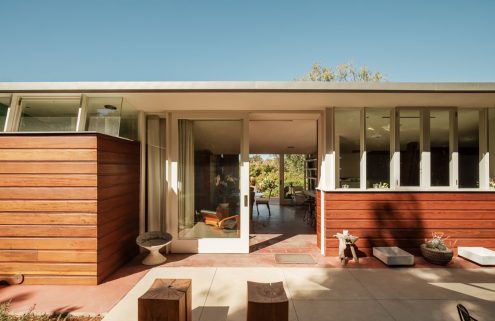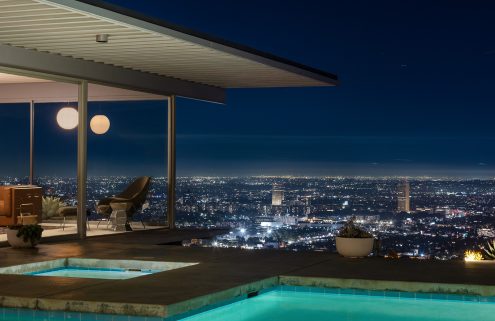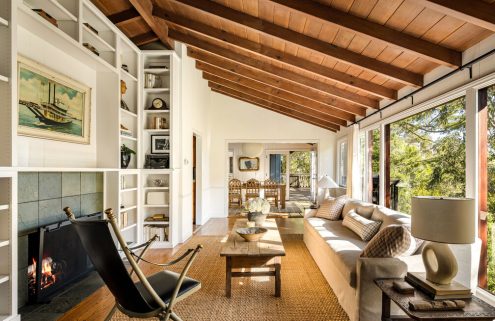When Leonardo DiCaprio collects his first ever gold-plated statuette at the Dolby Theatre in Los Angeles on Sunday evening, he’ll become only the 14th ‘Best Actor’ to do so at the venue. In its prestigious 88-year history, the Academy Awards have been held across ten different sites, from swanky five-star hotels to opulent Art Deco palaces. Ahead of this year’s ceremony, here’s our essential Oscars venues factsheet.
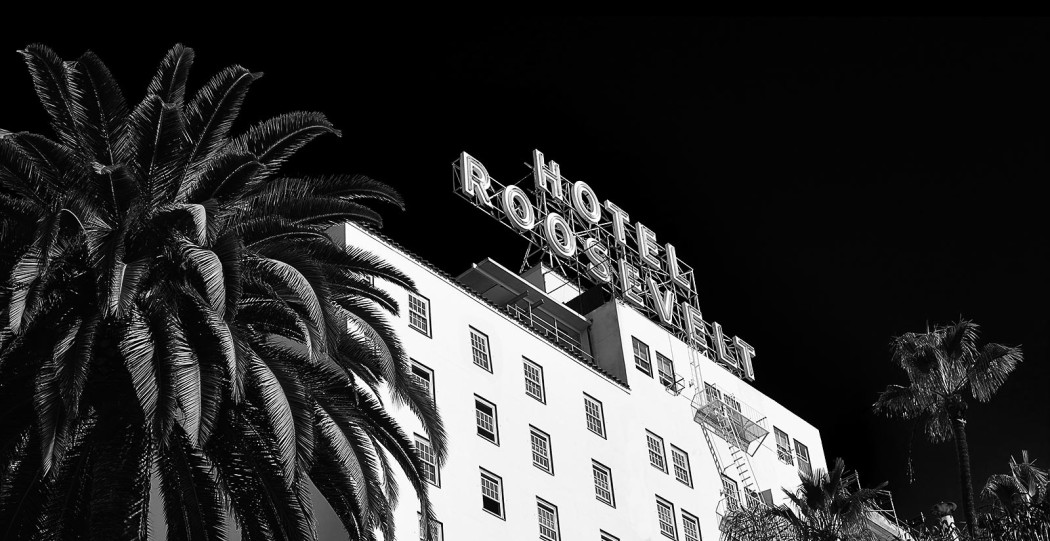
Hollywood Roosevelt Hotel (1929)
Two years after it was founded, the Academy of Motion Picture Arts and Sciences (AMPAS) invited around 250 esteemed guests to a private dinner reception at the Hollywood Roosevelt Hotel on May 16, 1929. The historic hotel was designed in the Spanish Colonial Revival style by architects Fisher, Lake and Traver, and the inaugural winners – including Charlie Chaplin and Janet Gaynor – were toasted in the glamorous Blossom Room.
Courtesy of The Hollywood Roosevelt Hotel
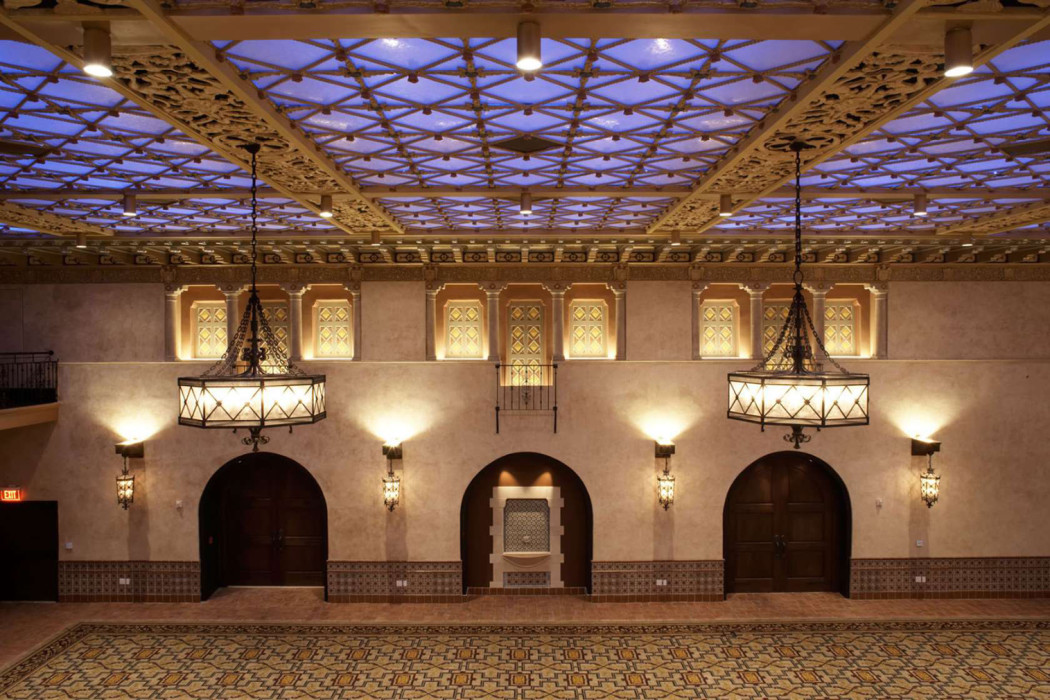
Hollywood Roosevelt Hotel (1929)
Two years after it was founded, the Academy of Motion Picture Arts and Sciences (AMPAS) invited around 250 esteemed guests to a private dinner reception at the Hollywood Roosevelt Hotel on May 16, 1929. The historic hotel was designed in the Spanish Colonial Revival style by architects Fisher, Lake and Traver, and the inaugural winners – including Charlie Chaplin and Janet Gaynor – were toasted in the glamorous Blossom Room.
Pictured: the restored Blossom Room. Courtesy of The Hollywood Roosevelt Hotel
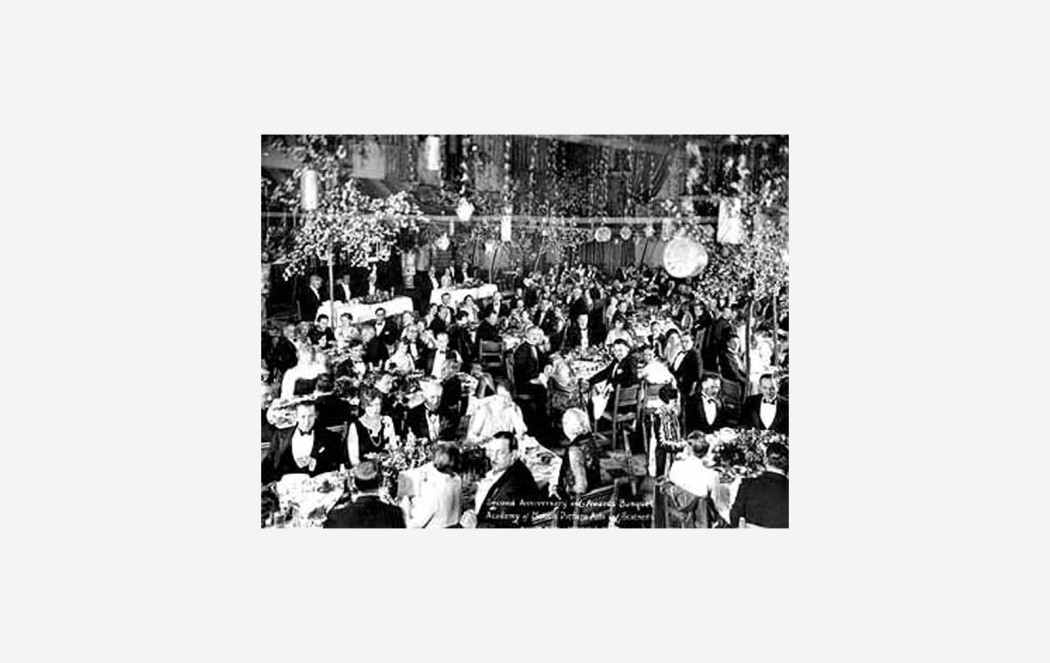
Hollywood Roosevelt Hotel (1929)
Two years after it was founded, the Academy of Motion Picture Arts and Sciences (AMPAS) invited around 250 esteemed guests to a private dinner reception at the Hollywood Roosevelt Hotel on May 16, 1929. The historic hotel was designed in the Spanish Colonial Revival style by architects Fisher, Lake and Traver, and the inaugural winners – including Charlie Chaplin and Janet Gaynor – were toasted in the glamorous Blossom Room.
Pictured: the first ever Academy Awards Ceremony at the Blossom Room, 1929.
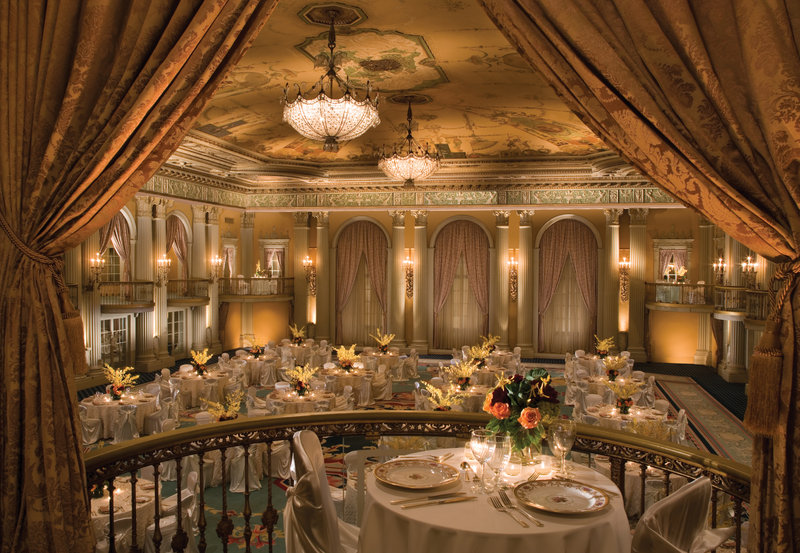
Millennium Biltmore Hotel and Ambassador Hotel (1930–1943)
Pictured, The Crystal Room at the Millennium Biltmore Hotel
The Millennium Biltmore Hotel’s Crystal ballroom is steeped in Oscars lore, having been the spot where MGM boss Louis B Mayer hatched his ambitious plan to stage an annual film industry showcase. For 13 years the ceremony alternated between the Biltmore and the fabled Cocoanut Grove nightclub at the Ambassador Hotel, which was torn down in 2005. The former, designed by Schultze and Weaver, opened in 1923 and features carved marble columns, crystal chandeliers and a hand-painted 30-foot frescoe in homage to Los Angeles’ Castilian heritage.
Photography courtesy of the Millennium Biltmore Hotel
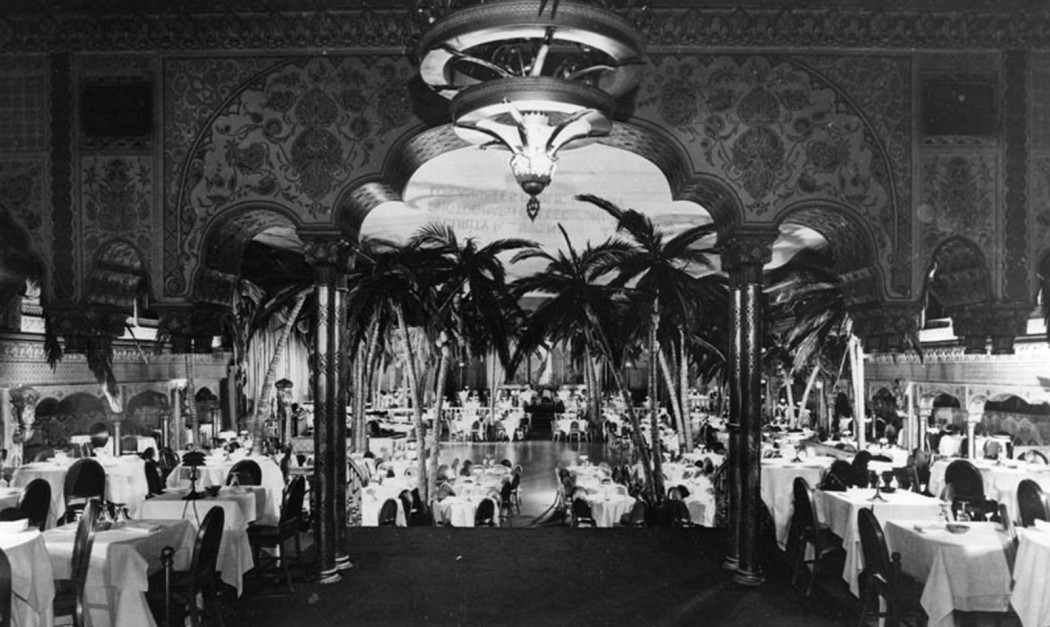
Millennium Biltmore Hotel and Ambassador Hotel (1930–1943)
Pictured: Cocoanut Grove nightclub at The Ambassador Hotel
The Millennium Biltmore Hotel’s Crystal ballroom is steeped in Oscars lore, having been the spot where MGM boss Louis B Mayer hatched his ambitious plan to stage an annual film industry showcase. For 13 years the ceremony alternated between the Biltmore and the fabled Cocoanut Grove nightclub at the Ambassador Hotel, which was torn down in 2005. The former, designed by Schultze and Weaver, opened in 1923 and features carved marble columns, crystal chandeliers and a hand-painted 30-foot frescoe in homage to Los Angeles’ Castilian heritage.
Photography courtesy of the Los Angeles Public Library
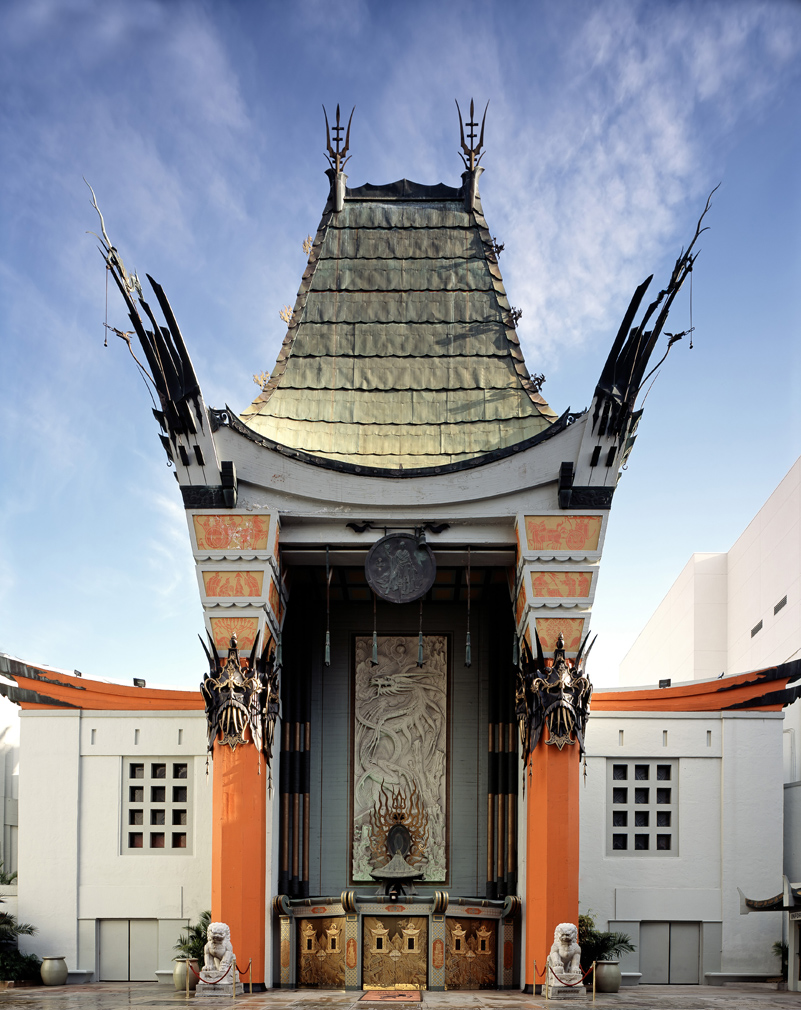
Grauman’s Chinese Theatre (1944-1946)
Despite being one of Hollywood’s most iconic venues, Grauman’s Chinese Theatre hosted the Oscars just three times during the mid-1940s. Theatre magnate Sid Grauman and real estate developer Charles E Toberman commissioned Meyer & Holler, who previously designed the neighbouring Egyptian Theatre in 1922. An enduring monument to Hollywood’s Golden Age, Grauman’s Chinese Theatre is famed for its concrete forecourt, which is imprinted with some 200 celebrity autographs, hand and footprints.
Photography: Carol Highsmith
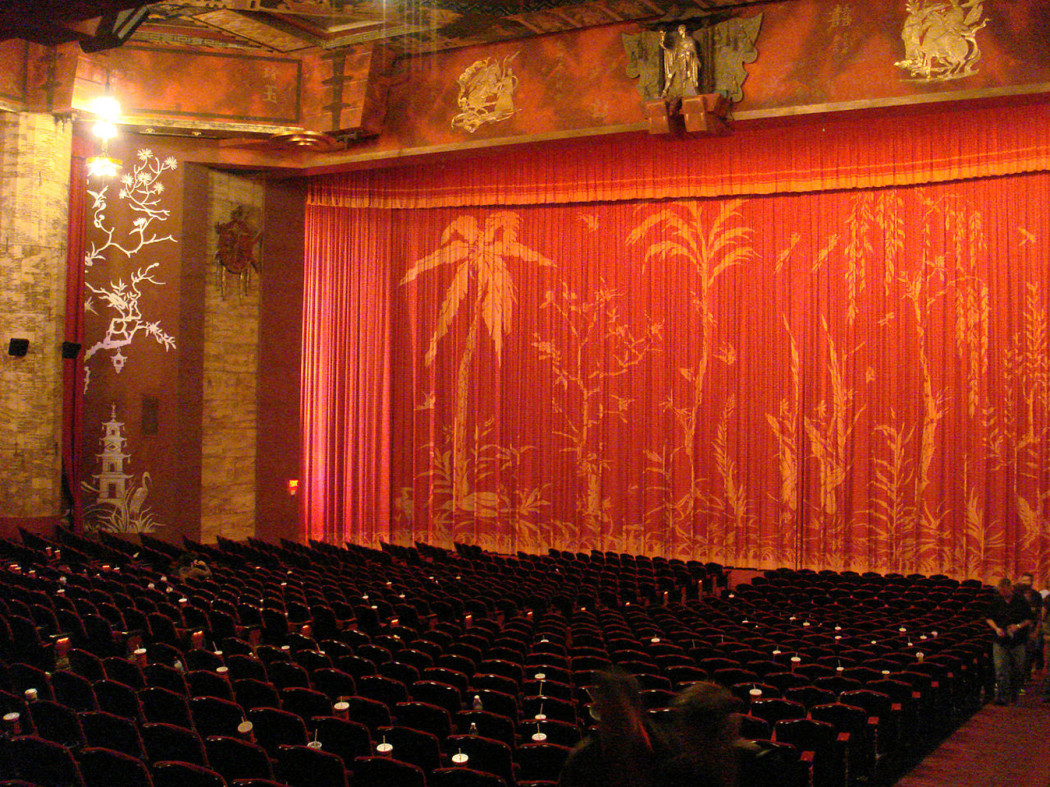
Grauman’s Chinese Theatre (1944-1946)
Despite being one of Hollywood’s most iconic venues, Grauman’s Chinese Theatre hosted the Oscars just three times during the mid-1940s. Theatre magnate Sid Grauman and real estate developer Charles E Toberman commissioned Meyer & Holler, who previously designed the neighbouring Egyptian Theatre in 1922. An enduring monument to Hollywood’s Golden Age, Grauman’s Chinese Theatre is famed for its concrete forecourt, which is imprinted with some 200 celebrity autographs, hand and footprints.
Pictured: The auditorium before it’s restoration. Photography: Bobak Ha’Eri
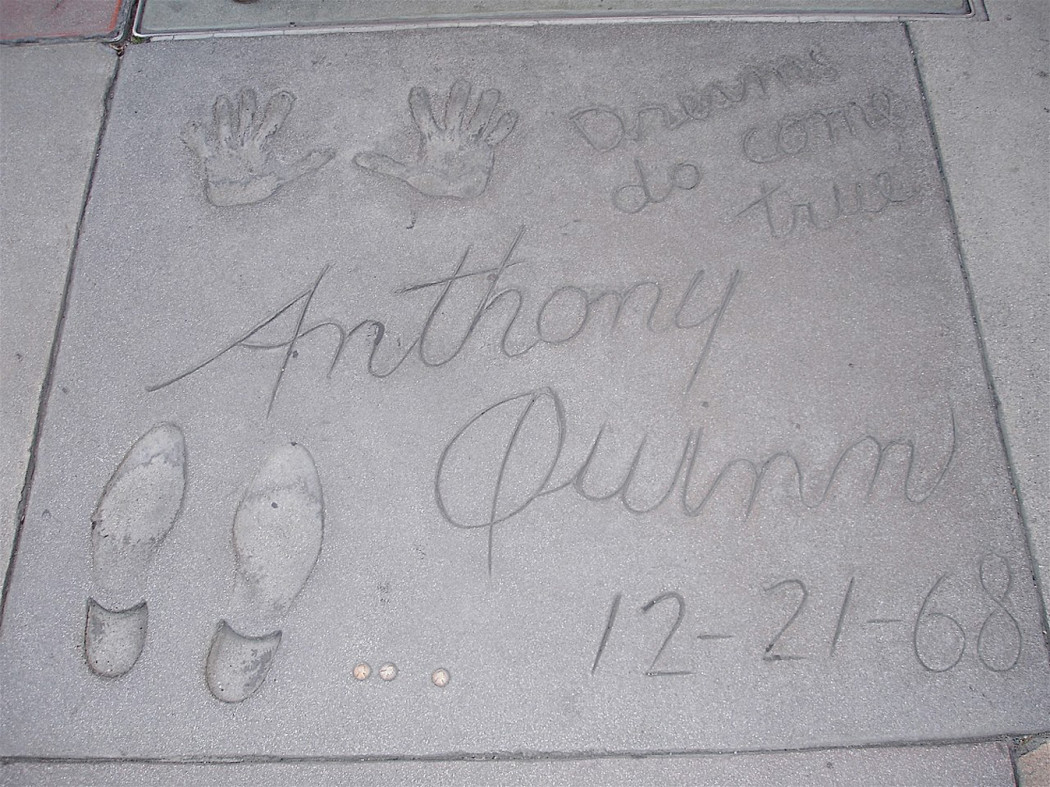
Grauman’s Chinese Theatre (1944-1946)
Despite being one of Hollywood’s most iconic venues, Grauman’s Chinese Theatre hosted the Oscars just three times during the mid-1940s. Theatre magnate Sid Grauman and real estate developer Charles E Toberman commissioned Meyer & Holler, who previously designed the neighbouring Egyptian Theatre in 1922. An enduring monument to Hollywood’s Golden Age, Grauman’s Chinese Theatre is famed for its concrete forecourt, which is imprinted with some 200 celebrity autographs, hand and footprints.
Photography: 3scandal0
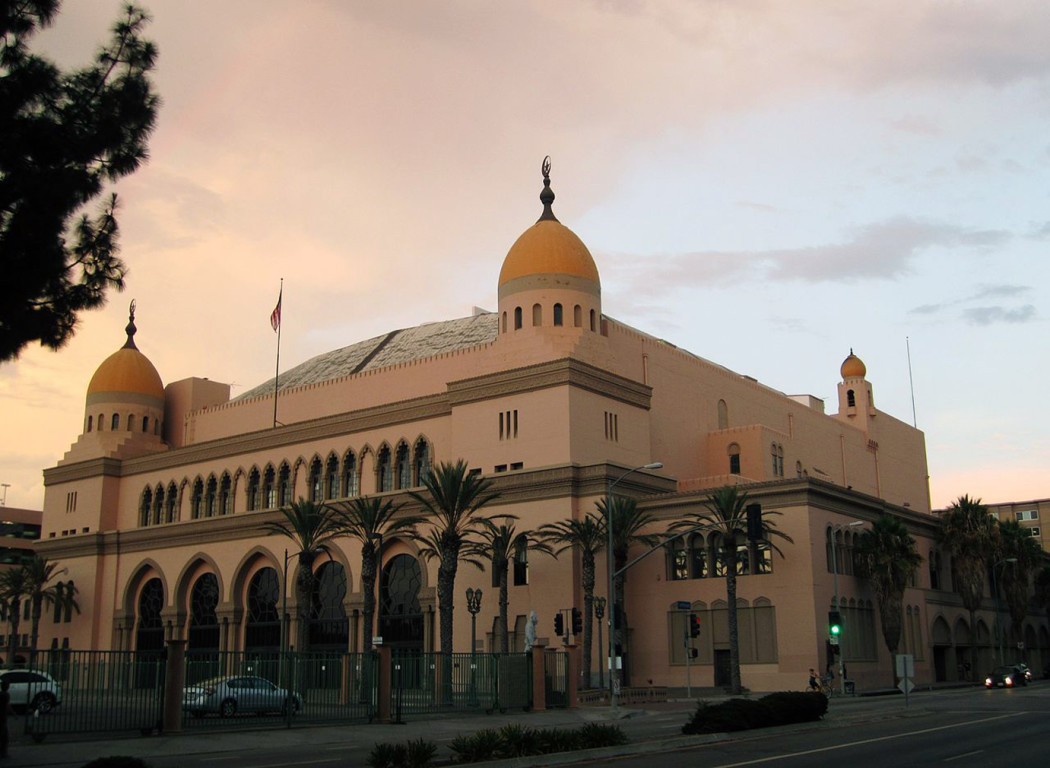
The Shrine Auditorium (1947-48)
The multi-purpose Shrine Auditorium opened in 1926 and appeared in classic films like King Kong and A Star is Born before going on to entertain everything from the Miss Universe Pageant to the Teen Choice Awards. Most notably, however, this Downtown landmark welcomed the great and the good of Hollywood twice in the late 1940s, and eight subsequent times between 1988-2001. Local architect John C Austin, who made significant contributions to the Griffith Observatory and Los Angeles City Hall, designed the 6,300 capacity theatre in the opulent Moorish Revival style.
Photography: Stephanie Kemna
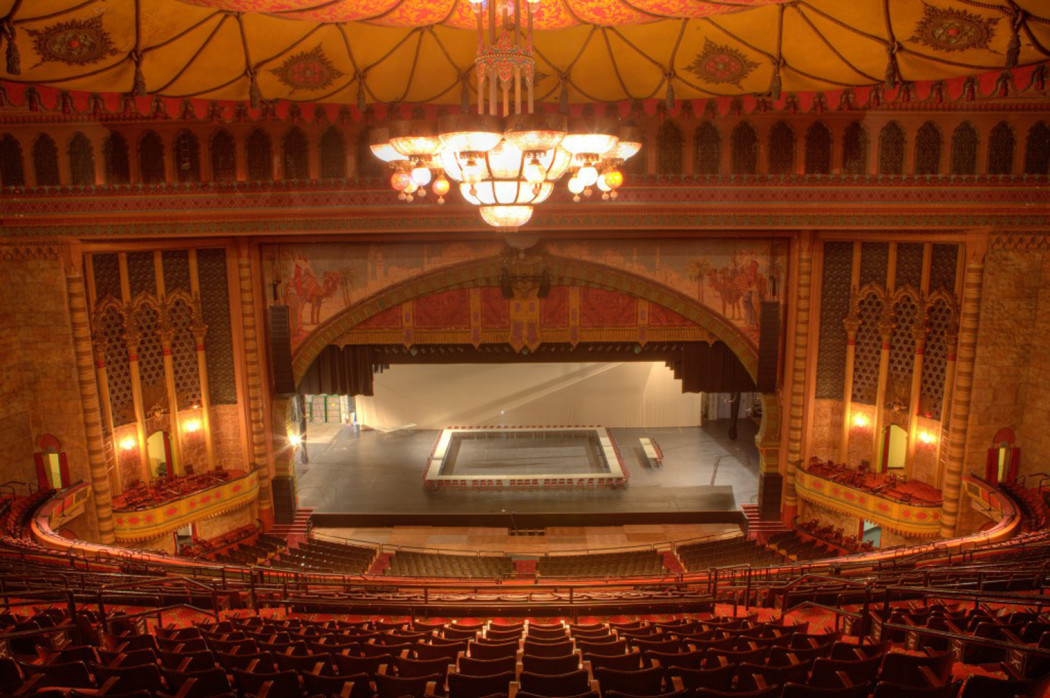
The Shrine Auditorium (1947-48)
The multi-purpose Shrine Auditorium opened in 1926 and appeared in classic films like King Kong and A Star is Born before going on to entertain everything from the Miss Universe Pageant to the Teen Choice Awards. Most notably, however, this Downtown landmark welcomed the great and the good of Hollywood twice in the late 1940s, and eight subsequent times between 1988-2001. Local architect John C Austin, who made significant contributions to the Griffith Observatory and Los Angeles City Hall, designed the 6,300 capacity theatre in the opulent Moorish Revival style.
Photography courtesy of Shrine Auditorium
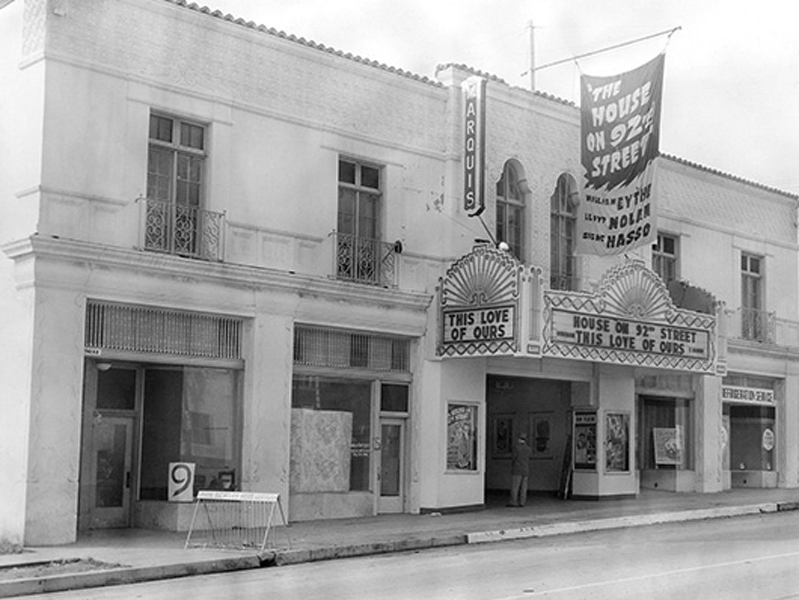
Academy Award Theater (1949)
As the name suggests, the venue for the 21st Academy Awards was AMPAS’ then headquarters – formerly the 900-seat Marquis Theatre – which was chosen due to a lack of funding from the major studios. In addition to marking the first occasion where a non-Hollywood production was named Best Picture (Hamlet), the 1949 ceremony was significant for the presentation of a unique Special Oscar to Sid Grauman, and for Humphrey Bogart being denied a Best Actor nomination for The Treasure of the Sierra Madre – one of the most infamous snubs in Oscars history.
Pictured: The Academy Awards headquarters and Theater on Melrose Avenue, now demolished. Photography courtesy of Classic Film Aficionados

The jewel in Hollywood Blvd’s Art Deco crown, the B Marcus Priteca-designed Pantages Theatre put on Tinseltown’s extravaganza throughout the 1950s. The last theatre built by sometime producer and vaudeville impresario Alexander Pantages, the building has been refurbished numerous times over the years – once after sustaining minor damage in the 1994 Northridge earthquake – but retains much of its period detail, including the vast orchestra pit, elaborate glass-and-bronze chandelier and 54-foot wide painted proscenium which adorn the auditorium.
Photography: JJ Ron
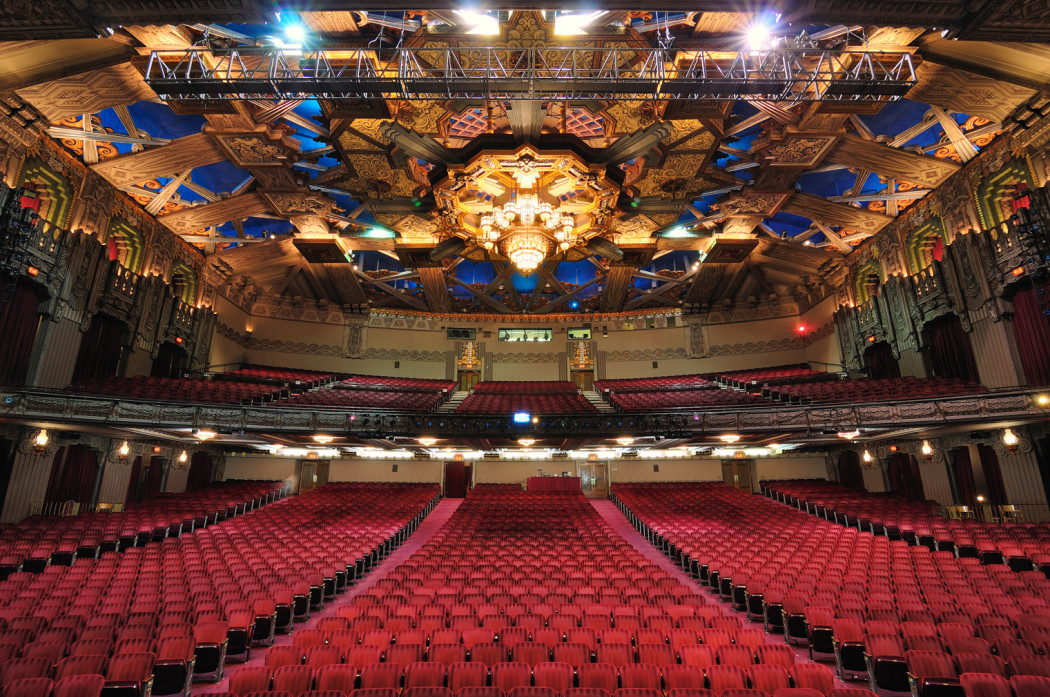
The jewel in Hollywood Blvd’s Art Deco crown, the B Marcus Priteca-designed Pantages Theatre put on Tinseltown’s extravaganza throughout the 1950s. The last theatre built by sometime producer and vaudeville impresario Alexander Pantages, the building has been refurbished numerous times over the years – once after sustaining minor damage in the 1994 Northridge earthquake – but retains much of its period detail, including the vast orchestra pit, elaborate glass-and-bronze chandelier and 54-foot wide painted proscenium which adorn the auditorium.
Photography: Christian Dionne
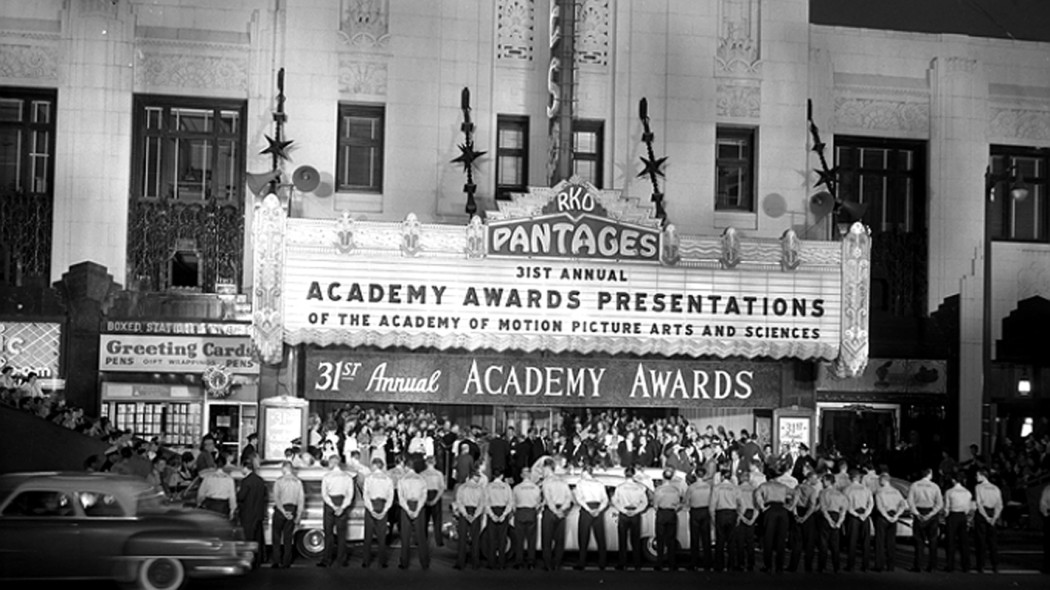
The jewel in Hollywood Blvd’s Art Deco crown, the B Marcus Priteca-designed Pantages Theatre put on Tinseltown’s extravaganza throughout the 1950s. The last theatre built by sometime producer and vaudeville impresario Alexander Pantages, the building has been refurbished numerous times over the years – once after sustaining minor damage in the 1994 Northridge earthquake – but retains much of its period detail, including the vast orchestra pit, elaborate glass-and-bronze chandelier and 54-foot wide painted proscenium which adorn the auditorium.
Pictured: 31st Annual Academy Awards, 1959

Santa Monica Civic Auditorium (1961-68)
Architect Welton Beckett – best known for designing the Capitol Records Building – drew up plans for this modern convention centre in the late 1950s, which in 1961 became the first and only venue outside LA’s city limits to host the ceremony. In 1964 Sidney Poitier became the first African-American to win the Academy Award for Best Actor, getting the nod from his peers for his role in Lilies of the Field.
Photography: Omar Bárcena
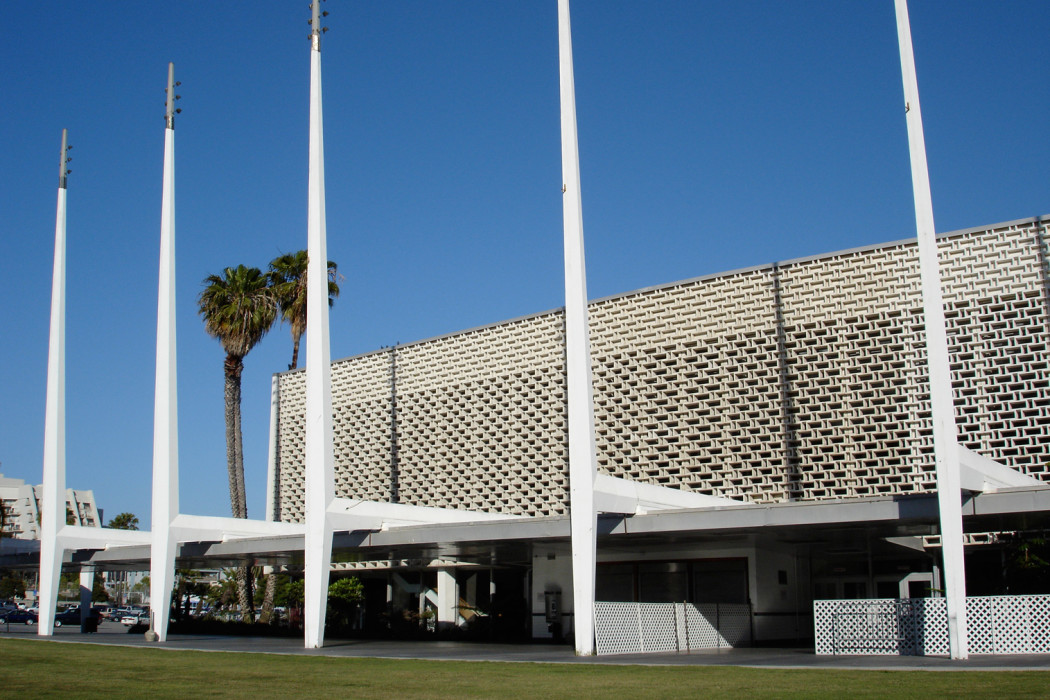
Santa Monica Civic Auditorium (1961-68)
Architect Welton Beckett – best known for designing the Capitol Records Building – drew up plans for this modern convention centre in the late 1950s, which in 1961 became the first and only venue outside LA’s city limits to host the ceremony. In 1964 Sidney Poitier became the first African-American to win the Academy Award for Best Actor, getting the nod from his peers for his role in Lilies of the Field.
Photography: Omar Bárcena
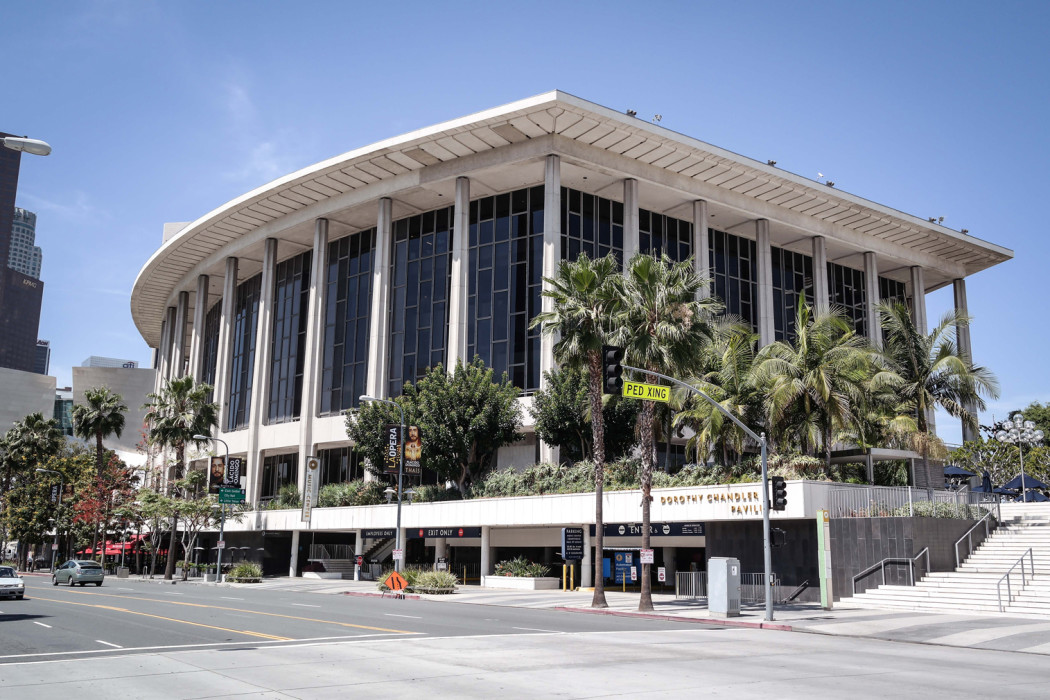
Dorothy Chandler Pavilion (1969-1999)
Another Welton Beckett wonder and the largest of three concert halls that make up the Los Angeles Music Center, the Dorothy Chandler Pavilion opened in 1964 and hosted the Oscars 24 times between 1969-1999. Both the New Formalism style exteriors and lavish decor by artist and designer Tony Duquette adhere to Beckett’s ‘total design’ philosophy, whereby planning, engineering, interiors, furniture, fixtures, landscaping and signage were all overseen by his firm. Stanley Kubrick picked up his solitary Oscar here in 1969, for Best Visual Effects on 2001: A Space Odyssey.
Photography: Visitor7
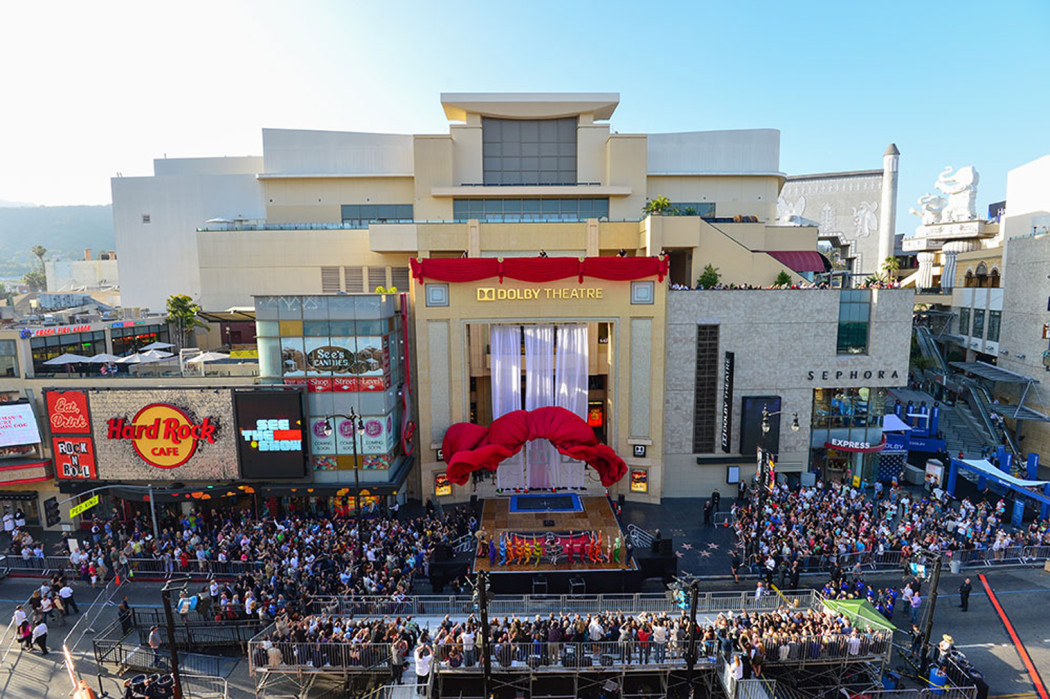
Situated on the Hollywood Walk of Fame close to Grauman’s Chinese Theatre, the Dolby Theatre (Kodak were forced to relinquish the naming rights after declaring bankruptcy in 2012) was designated the new permanent home of the Academy Awards when it opened in November 2001. Designed by David Rockwell, the versatile venue is noted for its suitability for staging televised events – a crucial selling point when catering for a global audience of 40 million. A testament to forward planning, the stairway leading up to the main hall is supported by Art Deco columns inscribed with the titles of previous Best Picture recipients, with enough space to accommodate winners up to 2071.
Photography courtesy of Dolby Theatre
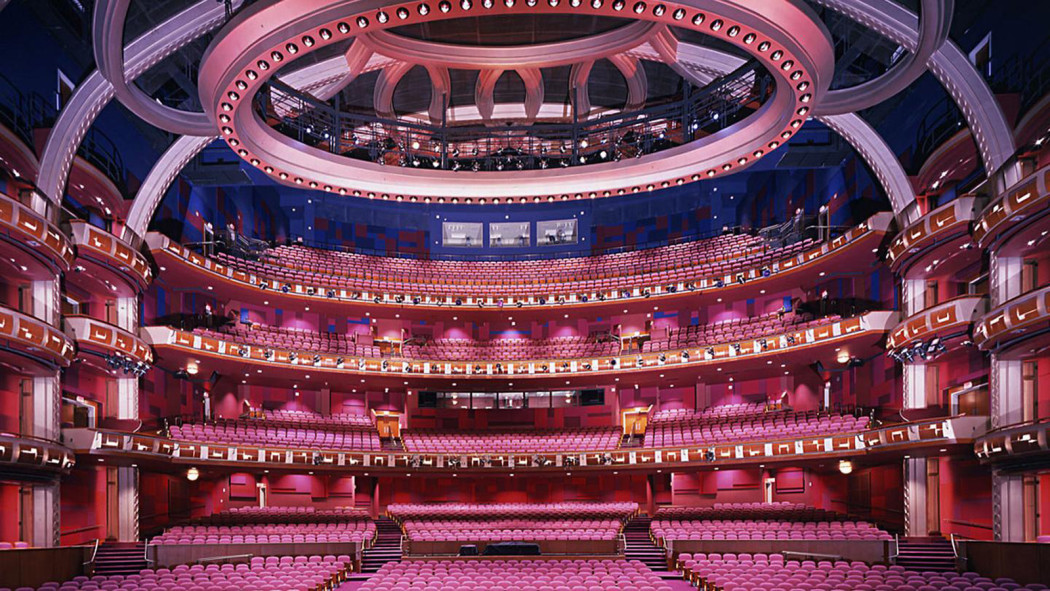
Situated on the Hollywood Walk of Fame close to Grauman’s Chinese Theatre, the Dolby Theatre (Kodak were forced to relinquish the naming rights after declaring bankruptcy in 2012) was designated the new permanent home of the Academy Awards when it opened in November 2001. Designed by David Rockwell, the versatile venue is noted for its suitability for staging televised events – a crucial selling point when catering for a global audience of 40 million. A testament to forward planning, the stairway leading up to the main hall is supported by Art Deco columns inscribed with the titles of previous Best Picture recipients, with enough space to accommodate winners up to 2071.
Photography courtesy of Dolby Theatre
